A Little Background on this Enriched Sweet Shortcrust Pastry Recipe
Pâte sablée is a crumbly, flaky enriched sweet shortcrust pastry that is perfect for desserts such as custard tarts, sandwich cookies and pumpkin pie. This recipe will make a single pie or tart shell. Before we get to the recipe, let’s briefly discuss the four main types of pastry dough.
What is shortcrust pastry?
Shortcut pastry dough has a specific ratio of two main ingredients: the flour and fat. The flour is typically two times the amount of butter by weight. This 2:1 ratio is easy to remember when making pastry dough. You may also hear this recipe ratio referred to as half fat to flour. The water or liquid ingredients is also typically one-half the amount of fat by volume.
Butter is the most common fat in shortcrust pastries, but it isn’t uncommon to find recipes with lard, margarine, vegetable shortening or a blend of two types of fat such as vegetable shortening or lard and butter. This is because shortening and lard often improves the texture and flakiness of the pastry dough whereas the butter gives tenderness and flavor.
There are also two types of methods to making shortcrust pastry. One method is the rubbing of cold butter into flour and then adding the remaining cold ingredients quickly. Keeping the ingredients cold is said to create the ultimate pie or tart shell by many bakers. The rubbing-in method is often used when making pâte brisée, pâte à foncer or pâté sablée. Pâte sucrée, however, often uses the creaming method. The creaming method is where you start with softened butter and cream in the sugar to add the remaining ingredients, usually at room temperatures. Many first time pie and tart shell makers find this to be an easier to work with dough as a result.
As you may have surmised, there are four main types of french pastry: pâte brisée, pâte à foncer, pâté sablée and pâte sucrée. There are many variations of these shortcrust pastry recipes and different countries of origins, but we are sticking with these four today. It is also helpful to understand the basics behind each one of these pastries and their uses in order to make the right decision on which pastry you need for a particular recipe. Let’s go over the basics of each of them briefly. Look at the chart below. Which one do you think would be better for a chicken pot pie versus a lemon meringue pie?
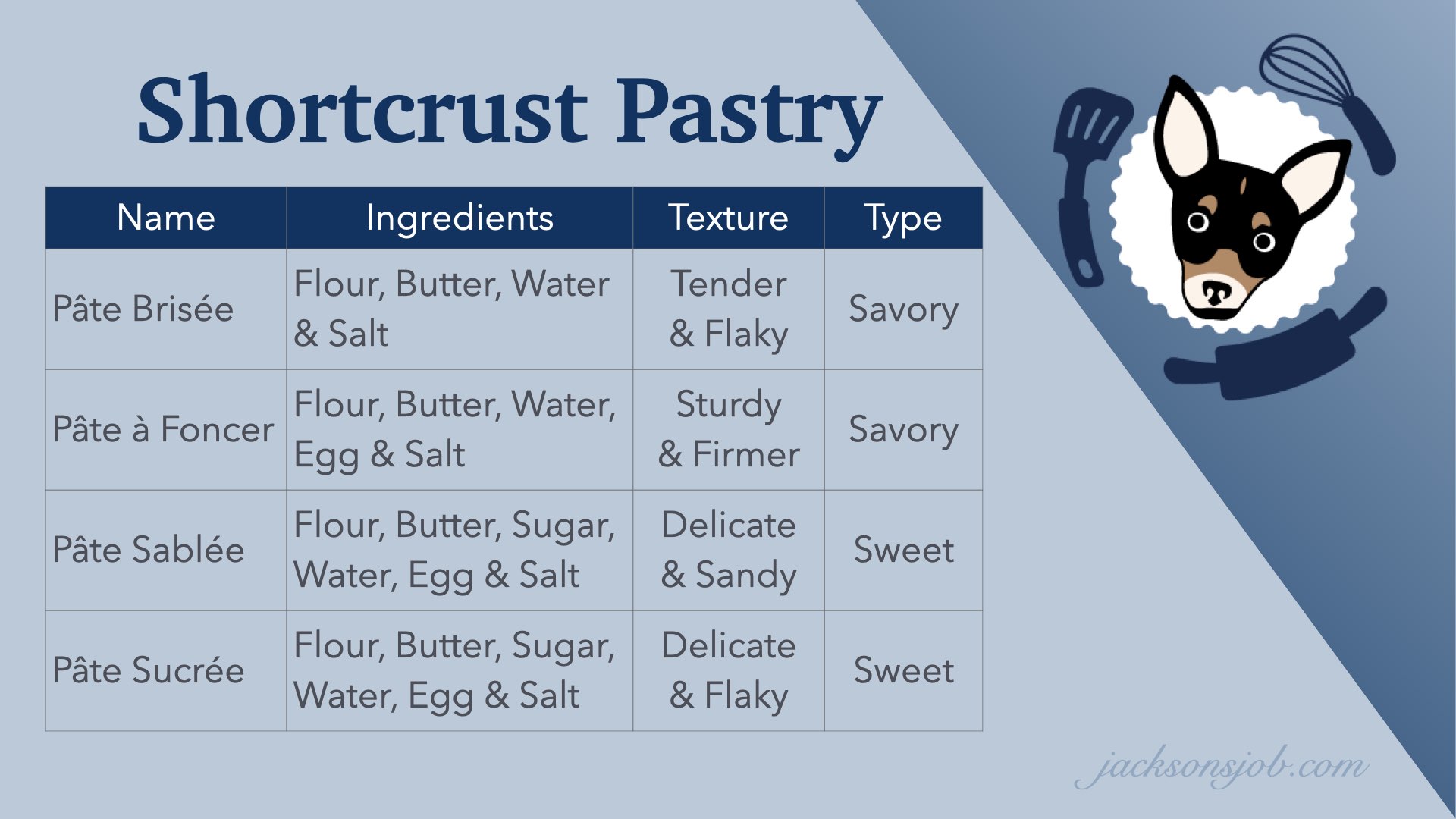
Pâte Brisée
Pâte brisée is crisp and crumbly and has a rich buttery flavor. Translates to mean “broken dough,” pâte brisée is also known as shortcrust pastry dough or pie dough. This shortcrust pastry is perfect for both sweet and savory pies, quiches and tarts. Because it is typically only flour, fat, water & salt, this shortcrust pastry is a little finicky to work with when rolling out. Sugar is sometimes used to delay gluten formation and to promote browning, but not as a sweetener. This dough is crumbly, tender and flakes easily.
Pâte à Foncer
Pâte à foncer is a shortcrust that has an egg added to the dough. It is an enriched shortcrust pastry. The egg helps bind everything together and helps prevent shrinking, collapsing and tearing when forming the dough and while baking. Sugar is sometimes used for delaying gluten formation and browning, but not to add sweetness. It isn’t uncommon to see baking soda in small amounts to also aid in browning. This enriched shortcrust is a sturdier pastry that is more prone to snapping and breaking than crumbling and flaking.
Pâte Sablée
Pâté sablée translates into “sand paste.” Pâté Sablée is an enriched sweet shortcrust pastry, but only moderately so. It is made using the rubbing in method. Pâté sablée will remind you a lot of shortbread but will be a little more sturdy and less crumbly because of the addition of eggs. Egg yolks are most commonly used so that the crumbly texture remains with a slight snap and to give a better flavor. Pâté sablée uses less sugar and the finished crust is far more crumbly than pâte sucrée.
Pâte Sucrée
Pâte sucrée translates simply into “sweet dough.” This enriched sweet pastry is a very rich buttery crust that is also lightly sweet to the taste. It is made using the creaming method. This pastry is nearly as sweet as a cookie, and falls somewhere between a savory pie crust and a rich sugar cookie. In fact, both the sweet shortcrust pastries are in many sandwich type cookie recipes and gingerbreads. This crust is so delicate from all the sugar that it practically melts in your mouth but is also sturdy and snappy under those cream pies and custard tarts. Pâte sucrée is more dry and snaps in comparison to pâté sablée that is more sandy and crumbles.
Step-By-Step Instructions
Now that we have learned a little about shortcrust pastries, let’s get to making this enriched sweet shortcrust pastry recipe or the pâte sablée. This will become one of your favorite pie shell recipes!
Step 1: Rubbing-In Method
When making this enriched sweet shortcrust pastry recipe, you will need to use the rub-in method to combine the flour with the butter. This creates a short, crisp dough, perfect for your savory pies and pastries. First, you will need to cube a stick of butter that is cold. Cut the butter into small cubes about 1/2″ or 1.27cm in size. Set aside. In a large bowl, combine flour, sugar and salt until well blended.

With your fingertips, begin rubbing the butter in with the flour and salt. You will be coating the flour in the butter which will make a more delicate pie shell.
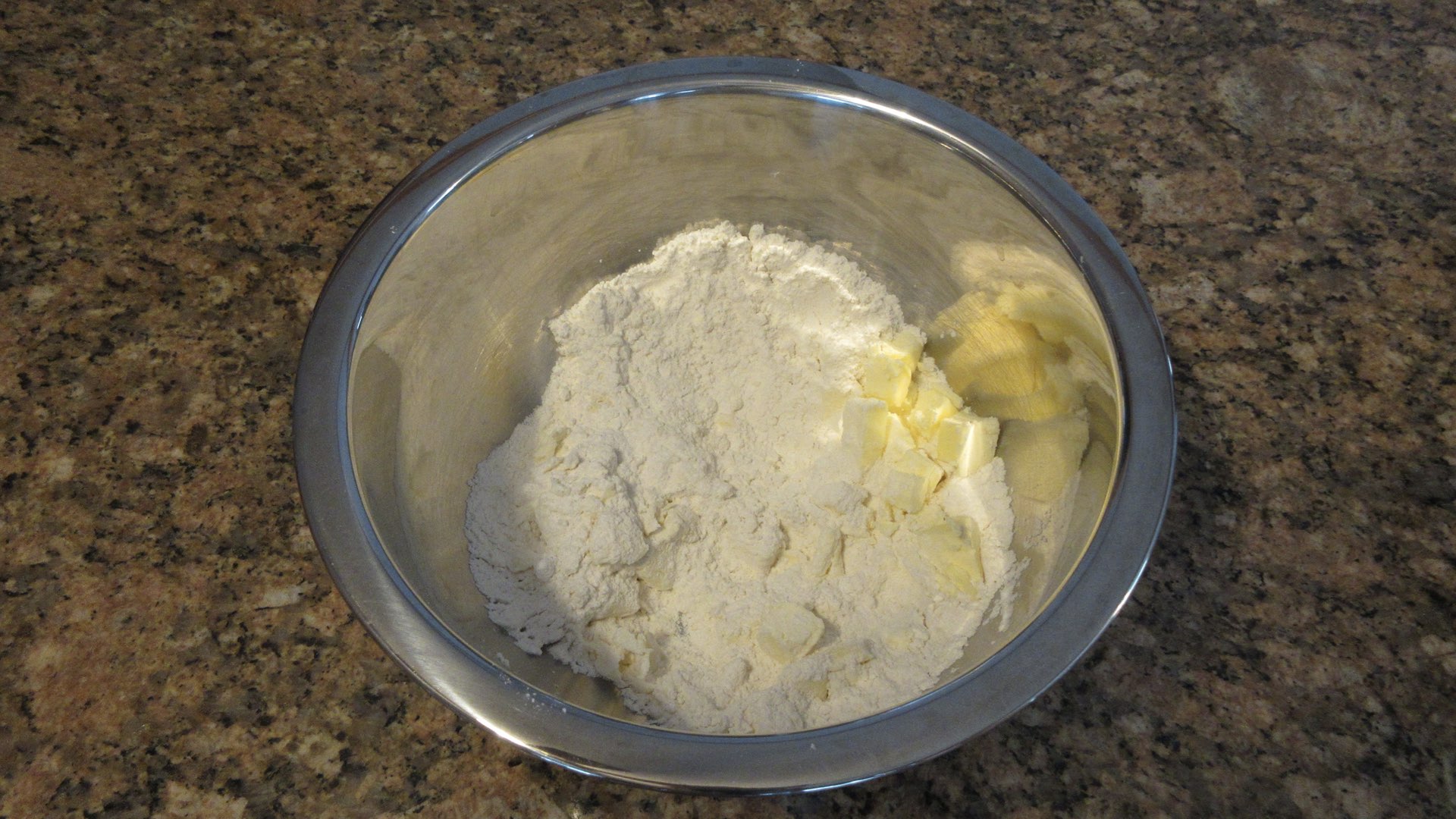
You should end up with various sized pieces from pea sized down to bread crumbs. It should look similar to breadcrumbs when it is well blended.
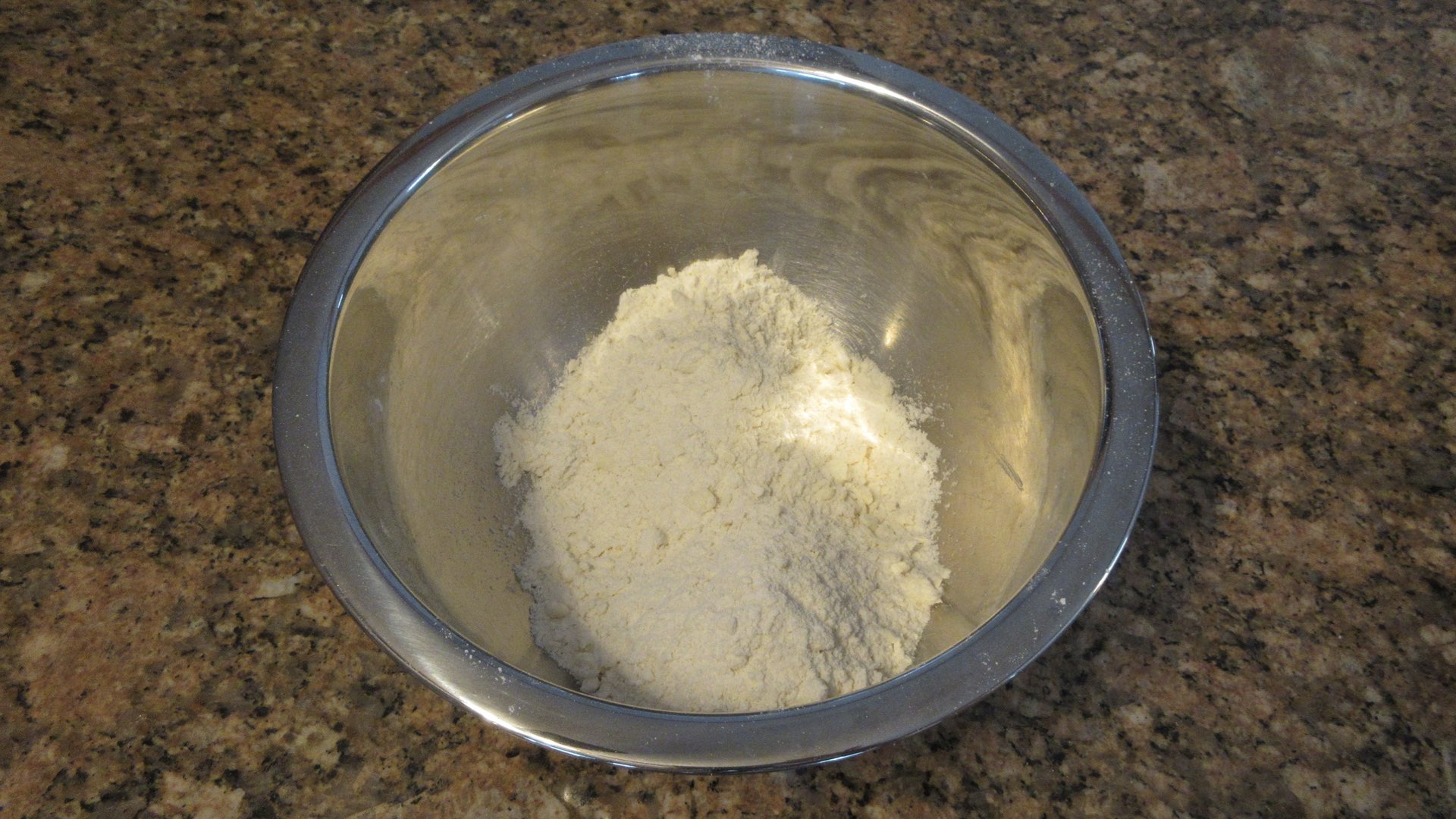
Step 2: Separate the Egg
You will need an egg yolk for this enriched sweet shortcrust pastry recipe. Separate the white from the yolk by running the whites through your fingers, using an egg shell or an egg separator. The egg whites are not needed for this recipe. Perhaps you can make some meringue or an omelette?
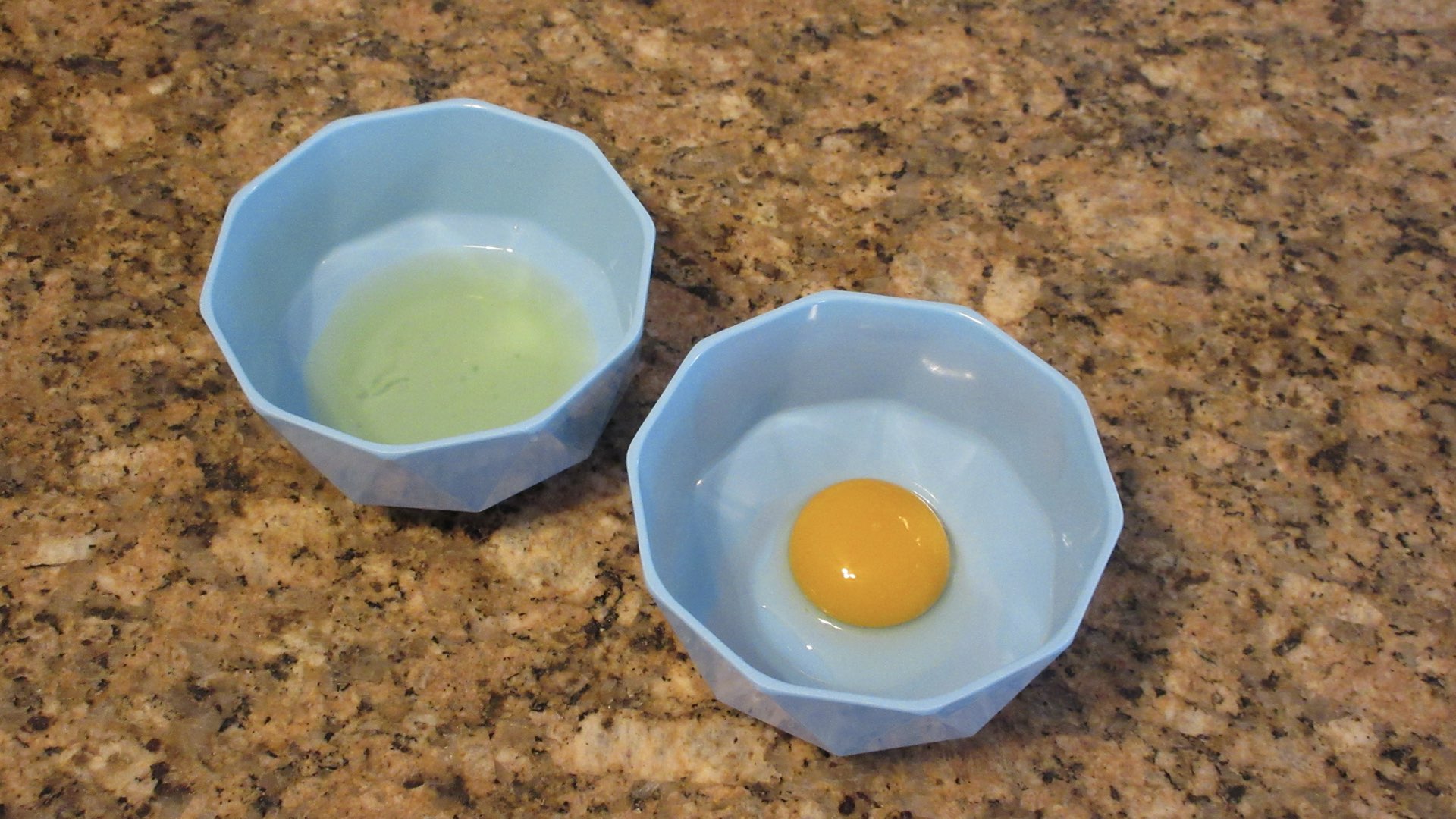
Using a butterknife, mix in the water, egg and vinegar until a sandy dough begins to form. It should hold its shape nicely when mixed together. If needed, you can add up to another one tablespoon (15mL) of water, one teaspoon (5mL) at a time.
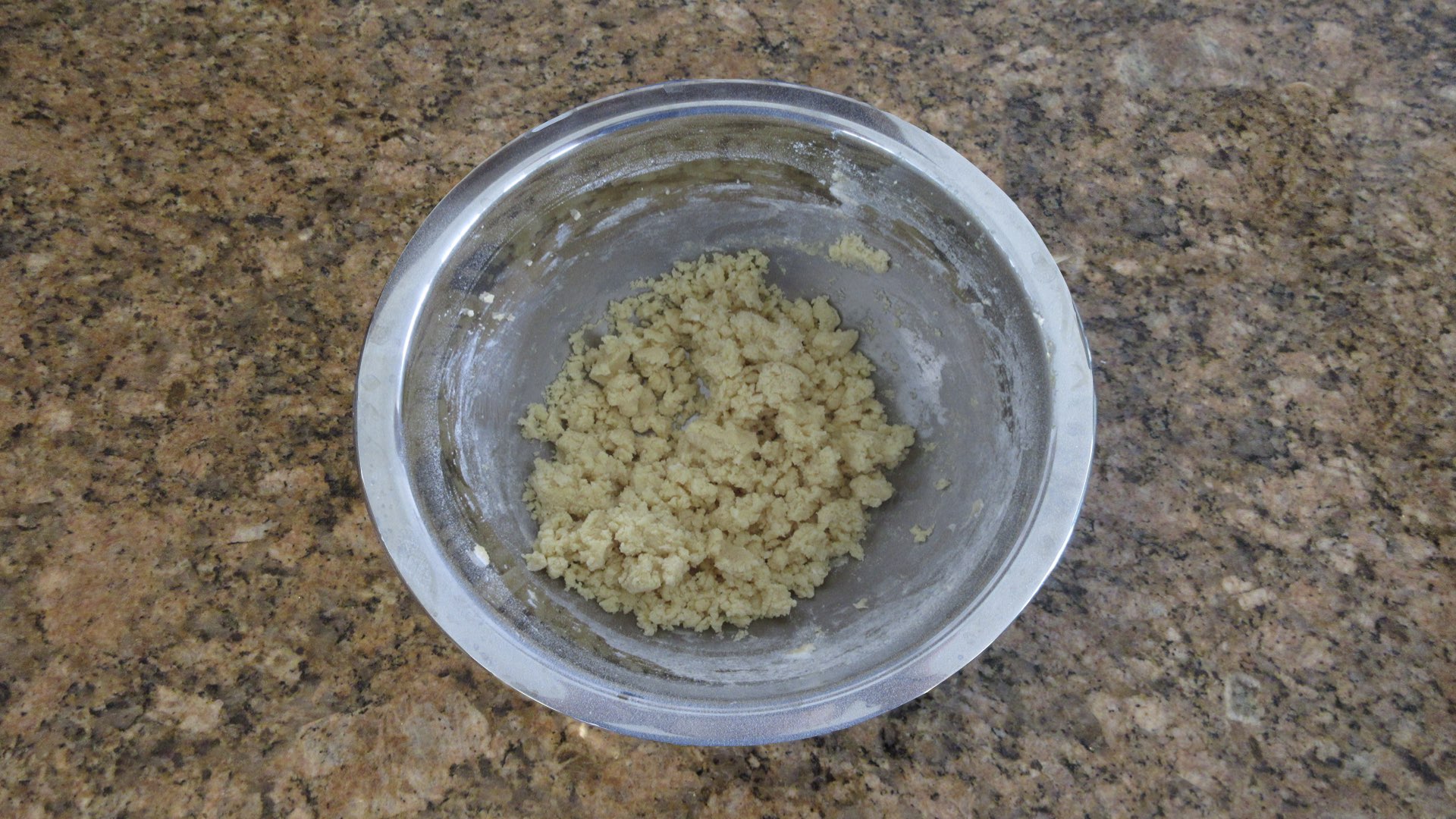
Step 3: Turn out the Dough
On a clean work surface, turn out the dough and begin squeezing the dough together into a round disc. You may kneed the dough briefly to help gather it, but don’t over do it. Some find it easier to use plastic wrap to help shape the dough.
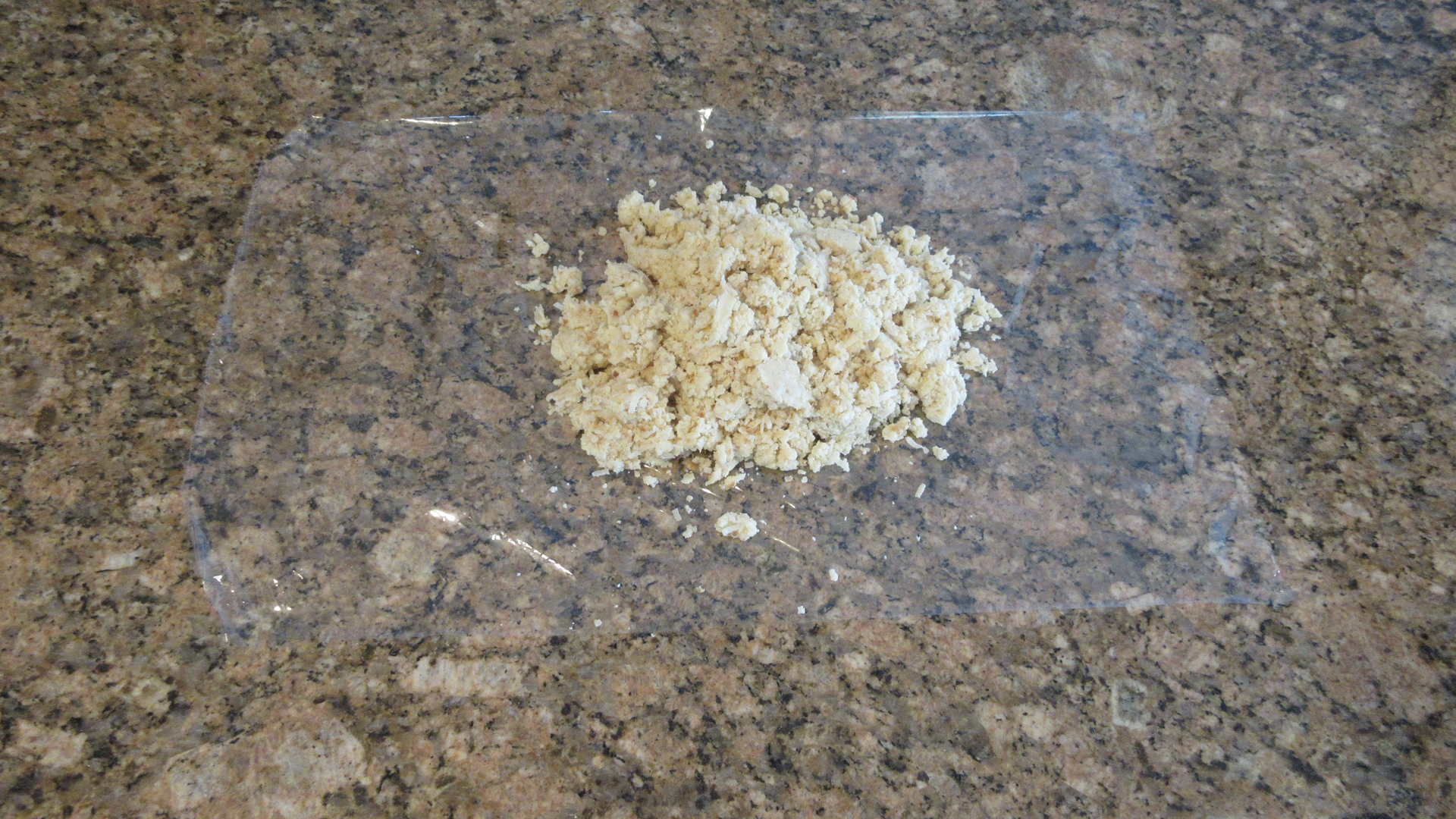
You should end up with a round shape within a minute or two. Do not overwork the pastry.

Step 4: Chill the Dough
Wrap the dough tightly in plastic wrap. Use a plastic bag or an airtight container. You need to chill the pastry before you use it. At least 20 minutes or until it’s firm, but 2 hours to overnight is best. Working with pastry dough too soon can lead to a tough crust. Once it has chilled, you are ready to use the pastry
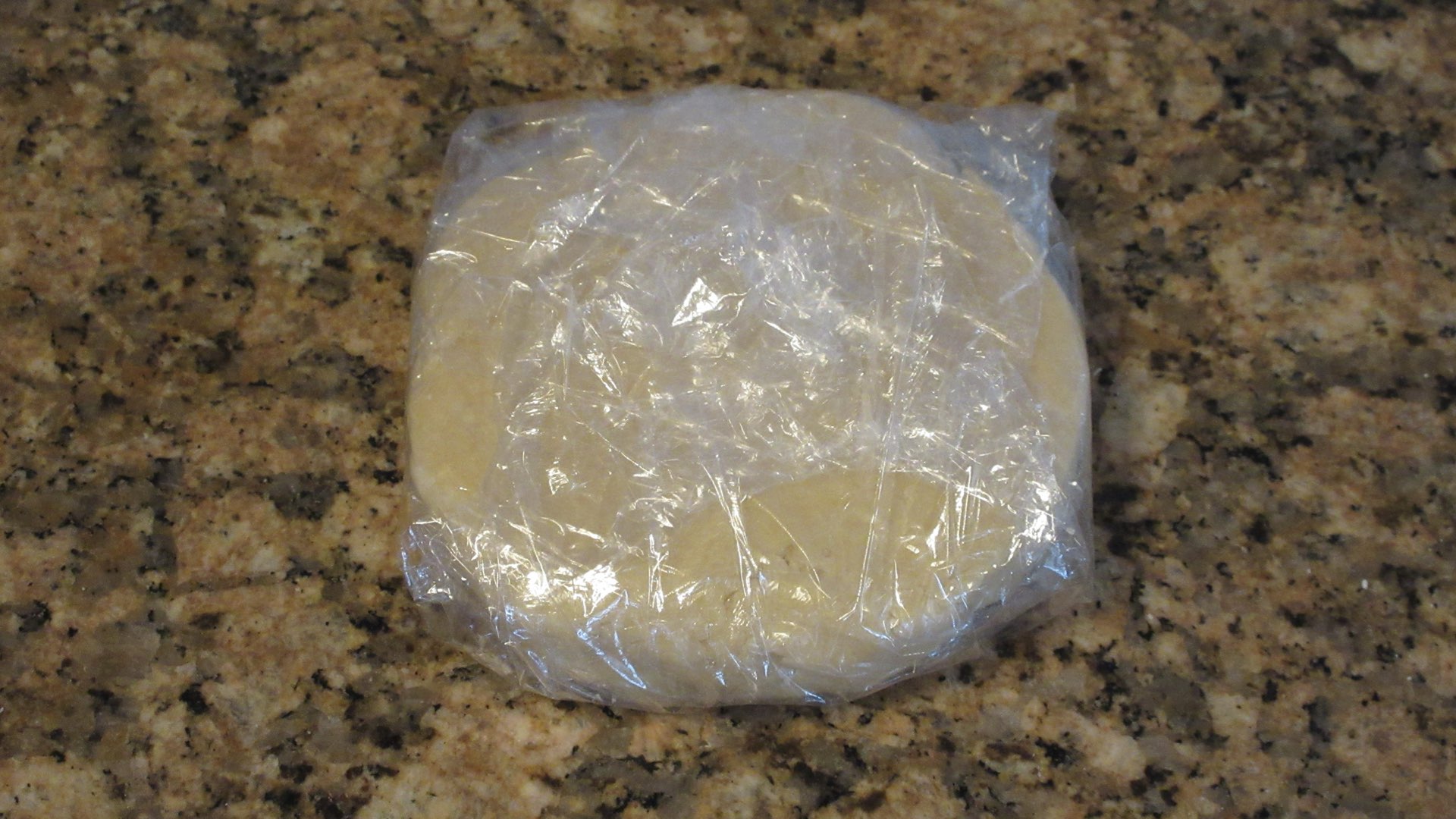
Substitutions and Tips
Here are some common substitutions and tips for this enriched shortcrust pastry recipe.
- Instead of butter, substitute margarine or vegetable shortening. If using vegetable shortening, you may need to add an additional tablespoon (15mL) of water.
- Replace 1/2 or all the butter with lard or vegetable shortening. Half lard and half butter will give you an amazingly flakey and tender crust.
- Use the zest of a lemon for a zesty and zippy tart shell. This is a perfect addition to a lemon meringue pie or custard tart.
- The lemon juice or vinegar makes the dough more pliable and will delay gluten formation. You can replace it with equal amounts of water.
- If you are having a hard time bringing the dough together, add up to 1 more tablespoon or 15 mL of water. Add it one teaspoon or 5 mL at a time.
- Vanilla is optional and is just for flavor enhancement. It can be omitted.
- Do not use vegetable oil spread or sticks for this recipe. You need at least 80% fat content and most vegetable spreads have significantly less fat.
- For best results, chill the dough overnight and bring to room temperature. This could take 20 – 30 minutes in a room that is 70°F (21°C.)
- If the dough cracks or is too firm to roll, it is too cold. Allow the dough to sit 5 – 10 minutes. Some minor cracks along the edges can happen. This is normal for shortcrust pastry.
- If the dough begins to stick and pull away, the dough is too warm. Chill 10-15 minutes and try again.
Storage
This shortcrust pastry will last up to 3 days in the fridge and 4 months in the freezer. Wrap tightly in plastic wrap and then in aluminum foil to store in the freezer for best results. Allow to thaw overnight in the refrigerator. For safety, do not thaw on counter as the pastry contains eggs.

Pâte Sablée – Sweet Shortcrust Pastry Recipe
Ingredients
- 1 ½ cups (225g) flour
- ½ cup (113g) cold butter or margarine
- 3 tbs (37.5g) sugar
- 3 tbs (45mL) water
- 1 large (20g) egg yolk
- 1 tsp (5mL) white vinegar or lemon juice
- ⅛ tsp (.625g) salt
Instructions
- Cube butter into 1/2" (1.27cm) pieces. In a large bowl, combine the flour, sugar and salt. With your fingertips, rub the cubed butter into the flour mixture until it resembles breadcrumbs.
- Mix together the egg yolk, water and vinegar. Using a butterknife, cut the water mixture into the flour until a dough begins to form. Turn out onto a clean work surface. Squeeze and fold the dough until it comes together.
- Pat into a round disc about 1" (2.54cm) thick. Wrap in plastic wrap and chill until firm, about 2 hours or overnight.
- Bring out pastry 20 – 30 minutes prior to shaping. Flour work surface. Roll into a 12" (30cm) circle, turning frequently to prevent sticking. Add more flour to work surface as needed.
- Place pastry dough into tart or pie pan and trim off excess. Chill in pie pan* 20 – 30 minutes while oven preheats to prevent shrinkage. Dock the bottom and sides with the tines of a fork. Place a layer of parchment or aluminum foil on top of the pastry. Fill with rice, flour, sugar, beans or pie weights.
- Preheat oven to 350°F (180°C.) Blind bake pie shell for 20 minutes. Remove from oven. Carefully remove parchment paper or aluminum foil to avoid spilling weights. Return to oven and bake an additional 10 – 20 minutes or until lightly golden brown. Remove pie crust or tart shell from oven and place on a wire rack to cool completely.
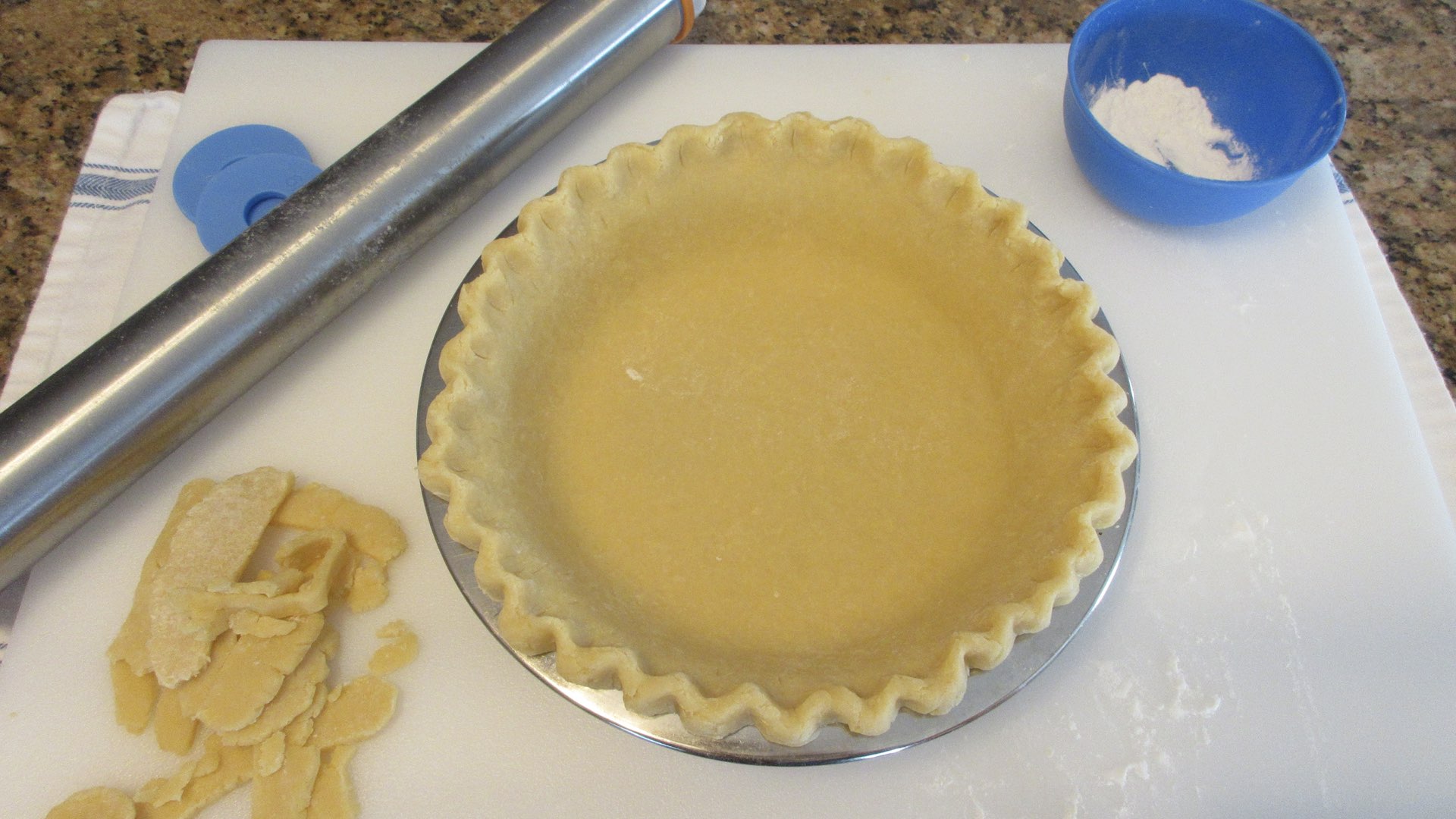
0 Comments